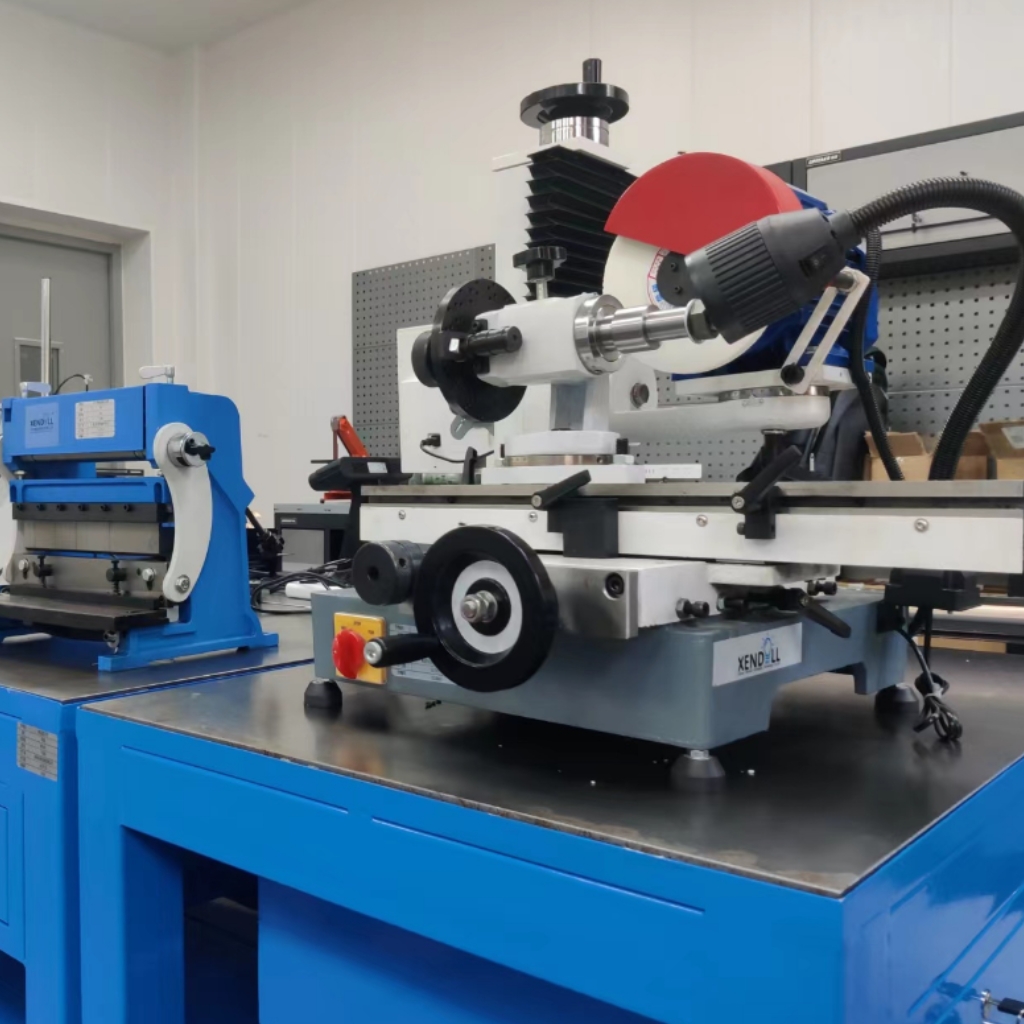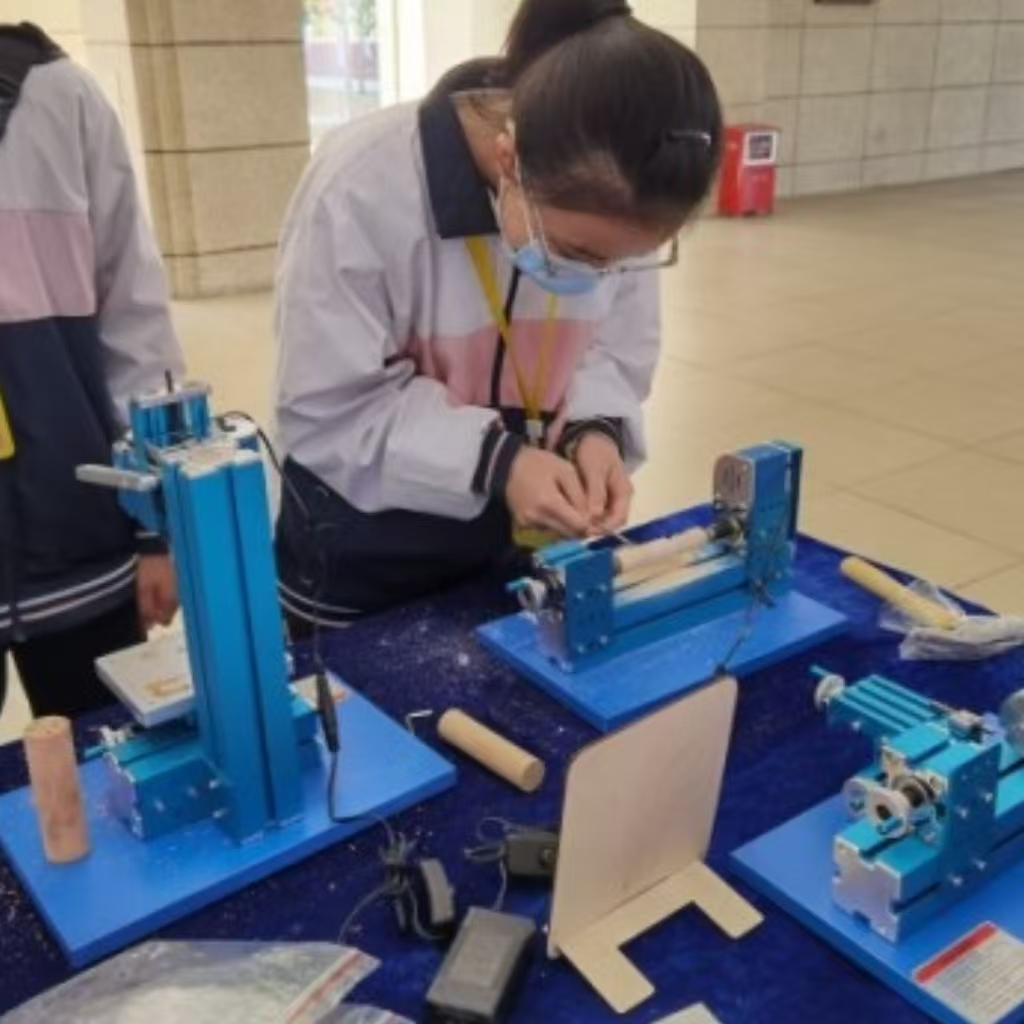Blog
Xendoll has 22 years of experience in the production of small machine tools. We will help you choose the suitable machine and share our experience in CNC machining with you.
 Aug 18, 2025
Aug 18, 2025

 717
717
Precisely mounting the workpiece is the critical first step in any successful lathe operation. Where and how you secure the material directly impacts safety, accuracy, surface finish, and the overall feasibility of your project. Understanding the different methods for fitting a workpiece onto a lathe machine – whether it's a massive industrial model or a versatile Xendoll mini lathe – is essential for machinists, educators, and hobbyists alike. Let's explore the primary locations and techniques.

Body: Key Workpiece Mounting Locations & Methods
In the Chuck (The Most Common Method):
3-Jaw Chuck: Self-centering, ideal for round or hexagonal stock. Offers quick setup but slightly less precision than a 4-jaw. Perfect for general work on mini lathes like Xendoll models.
4-Jaw Chuck: Independent jaws allow for precise centering of irregular shapes (square, rectangular, offset rounds). Essential for complex setups and higher accuracy demands.
Keyed Chucks: Often used on smaller machines (Xendoll mini lathes frequently use these) for drill bits or small round stock, tightened with a key.
Location: The workpiece is gripped directly by the jaws of the chuck, which is mounted on the lathe's main spindle (headstock).
Types:
Advantages: Secure hold for shorter-to-moderate length workpieces, versatility, relatively quick setup (especially 3-jaw).
Limitations: Chuck runout can affect accuracy; gripping force may distort thin-walled parts; limited support for very long pieces without additional support.
On a Faceplate:
Location: The workpiece is bolted or clamped directly onto a large, flat disc (the faceplate) attached to the headstock spindle.
Use Case: Ideal for irregularly shaped workpieces that cannot be held in a chuck, large diameter discs, or parts requiring machining operations on their face relative to the axis. Often used in woodturning but applicable in metal for specific jobs.
Advantages: Maximum flexibility for holding awkward shapes.
Limitations: Setup can be complex and time-consuming; requires careful balancing to prevent vibration; less rigid than chuck mounting for some operations.
Between Centers (For Long or Precise Work):
Headstock Center: Can be a "live center" (rotates with the workpiece) or a "dead center" (stationary, requires lubrication).
Tailstock Center: Almost always a live center on modern lathes to reduce friction and wear. Xendoll tailstocks typically accommodate standard live centers.
Lathe Dog: Clamps onto the workpiece end and catches on the drive plate to transmit rotation.
Location: The workpiece is supported at one end by a center mounted in the headstock spindle (often using a lathe dog and drive plate) and at the other end by a center mounted in the tailstock quill.
Components:
Advantages: Excellent support for long, slender workpieces (reducing deflection/vibration), allows for machining along the entire length, facilitates very precise concentricity when turning between centers multiple times.
Limitations: Setup is more involved; requires center holes drilled accurately in each end of the workpiece; cannot easily face off the very end held by the dog.
In a Collet (For High Precision & Repeatability):
Location: The workpiece is held within a precision collet, which is itself mounted in the headstock spindle (often via a collet chuck or directly into a compatible spindle nose).
How it Works: Collets contract uniformly around the workpiece when tightened, providing exceptional grip and concentricity.
Use Case: Best for precision machining of small-diameter bar stock (round, hex, square), especially where high runout accuracy is critical. Very common in watchmaking, electronics, and for repetitive tasks. Compatible collet systems are a valuable accessory for precision-focused Xendoll lathes.
Advantages: Superior accuracy and repeatability, excellent grip on small diameters, minimal workpiece distortion.
Limitations: Typically limited to smaller diameters (specific collet size needed), less versatile for large or irregular shapes than chucks, can be more expensive per size.
Using the Tailstock for Support (Often Combined):
Location: While not the primary mounting point, the tailstock is frequently used in conjunction with headstock mounting (chuck or collet) to provide additional support to the free end of a longer workpiece.
Method: A center (usually live) is advanced from the tailstock quill and brought into contact with a center hole drilled in the end of the workpiece. This provides a "steady rest" effect.
Advantages: Dramatically reduces vibration, chatter, and deflection in long workpieces, enabling better surface finishes and dimensional accuracy. Crucial for drilling, reaming, or tapping operations where the tool is fed from the tailstock.
Limitations: Adds an extra setup step; requires a center hole; limits access to the supported end of the workpiece.

Conclusion: Choosing the Right Fit for Safety and Success
Selecting the optimal mounting method – whether it's the simplicity of a 3-jaw chuck on a Xendoll mini lathe for a hobby project, the precision of a collet for small components, or the stability of turning between centers for a long shaft – is fundamental. Always prioritize a secure and rigid setup to ensure operator safety, protect your machine and workpiece, and achieve professional-grade results., and achieve the high-quality machining results expected by professionals, educators, and discerning hobbyists worldwide. Explore the mounting options compatible with your Xendoll lathe tools to unlock its full potential for your next turning project.



 Show all our samples
Show all our samples
 Provide you with a free quote
Provide you with a free quote
 Answer all the questions you may have
Answer all the questions you may have
 Guided installation and other options
Guided installation and other options